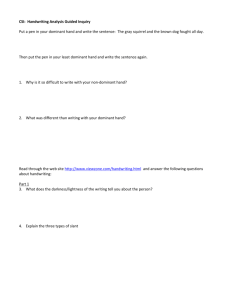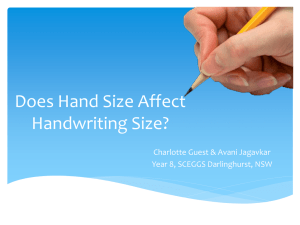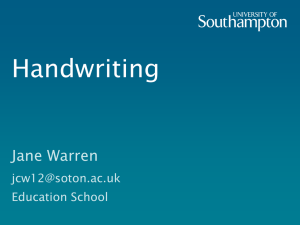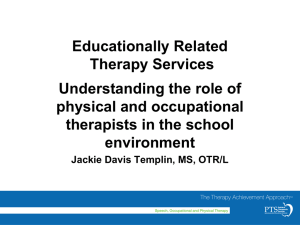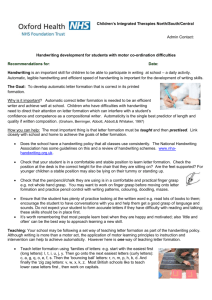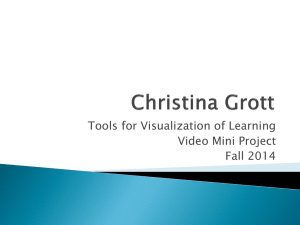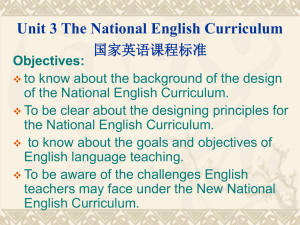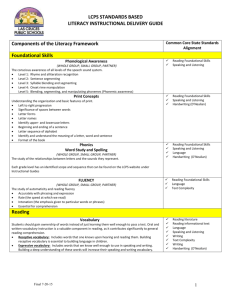Minnesota Handwriting Assessment
advertisement
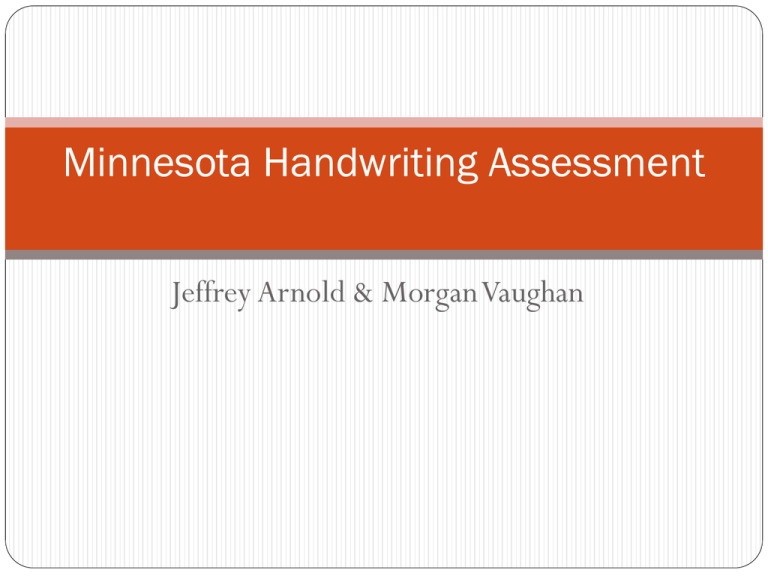
Minnesota Handwriting Assessment Jeffrey Arnold & Morgan Vaughan Key Characteristics Purpose To quantify selected aspects of young student’s handwriting Used to support or reject teachers subjective judgment of poor quality or slow rate handwriting in students Age Second semester 1st graders and 2nd graders Frame of Reference most likely used guiding selection of this tool Biomechanical Developmental PEO Bottom-Up Approach Test Development and Standardization Test development Literature reviews Consultation with teachers Standardization sample n = 2,000 11 different states Second semester 1st graders and 2nd graders Domains Rate – how fast the child writes Legibility – how readable is a letter? Form – does the letter make the shape it is supposed to with all lines connect, and all straight lines straight, and curved lines curved. Alignment – does the letter rest within 1/16 above or below the base line? Size – how big or small the letters are? Spacing – how far apart or close together are the letters? Psychometric Properties (Reliability) Interrater Pearson Correlation (.77-.88) Intrarater Fisher’s Z Rate – 1.00 Legibility - .96 Form and spacing - .97 Alignment and Size - .99 Test-retest Rate – 71% Legibility 64% Form – 75% Alignment - 86% Size – 82% Spacing – 76% Psychometric Properties – Validity Content Based on literature reviews and consultation with primary grade teachers Construct Manual does not explain but the explanation for content validity explains the construct as well Criterion Concurrent – measured using the Test of Visual Motor Skills Strong association between first graders and students in special education with no OT, and for students receiving OT. Measurement concerns Scores are subjective because they are based on the facilitator’s judgment of the handwriting. Only inclusion criteria: Child must be in 1st or 2nd grade No exclusion criteria Test Length 10-15 minutes for total administration and scoring. 2.5 minutes to determine Rate Child can finish sentence for legibility score. Test Cost Starter kit - $87.00 Manual 1 D’Nealian pad 1 Manuscript pad Each pad has 25 sheets Clear 6 inch ruler Print pads $25 – package of 4 pads of 25 sheets for each D’Nealian and Manuscript print pads Testing Procedures Have student seated at a desk or table of appropriate height for their size Lighting and ventilations should be appropriate and comfortable Choose appropriate stimulus sheet (D’Nealian or Manuscript) depending on handwriting style practiced in the classroom. Time the test for 2 ½ minutes to establish rate score. If the student did not finish the sentence give additional time to finish the words to score the 5 quality categories Test Items Scoring Scoring Interpretation Like Peers Level is equivalent to scoring in the top 75% of the range of students. Somewhat Below Peers Level is equivalent to the bottom 5%-25% of the range of students. These students should be monitored to determine the underlying problem. Well Below Peers Level is equivalent to the bottom 5% of the range of students. These students should be sent for an evaluation to determine the underlying problem. Test results Area(s) of occupation addressed Education MHA is best administered in a school setting. Reference Asher, I.E. (Ed.). (2014). Asher’s Occupational Therapy Assessment Tools (4th ed.). Bethesda,MD: AOTA Press. Reisman, J. (1999). Minnesota Handwriting Assessment. San Antonio, TX: Pearson.
